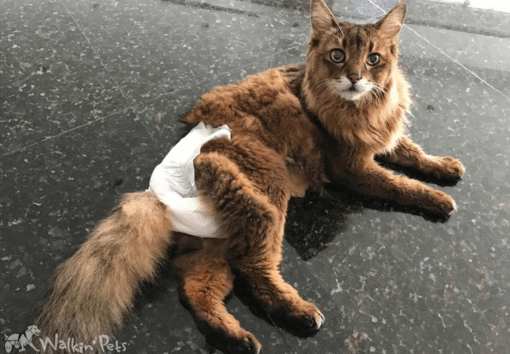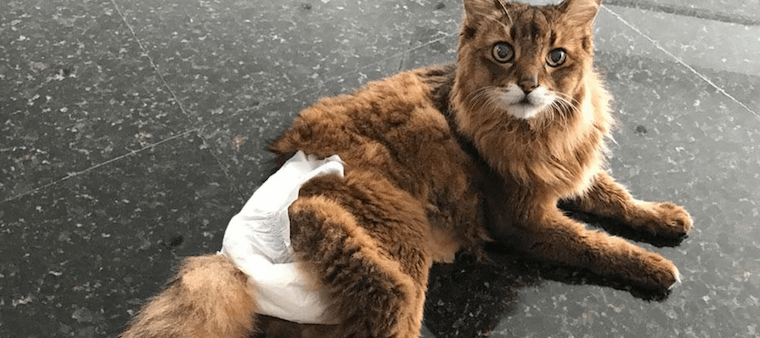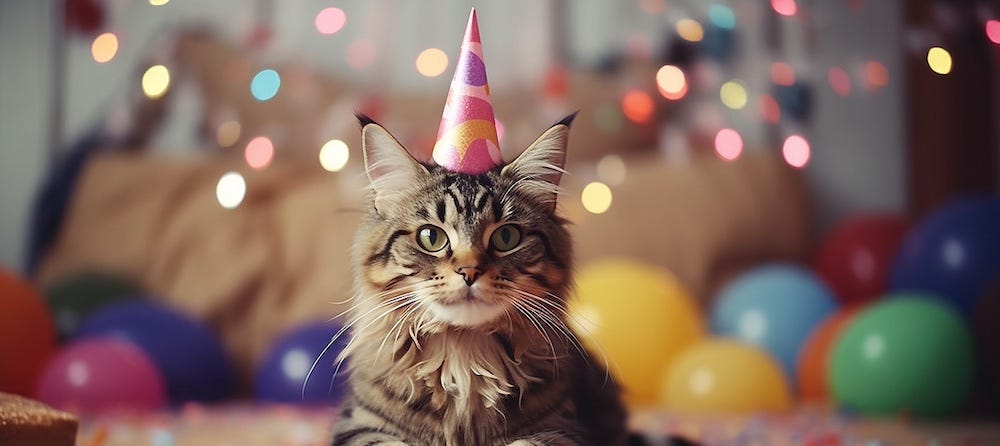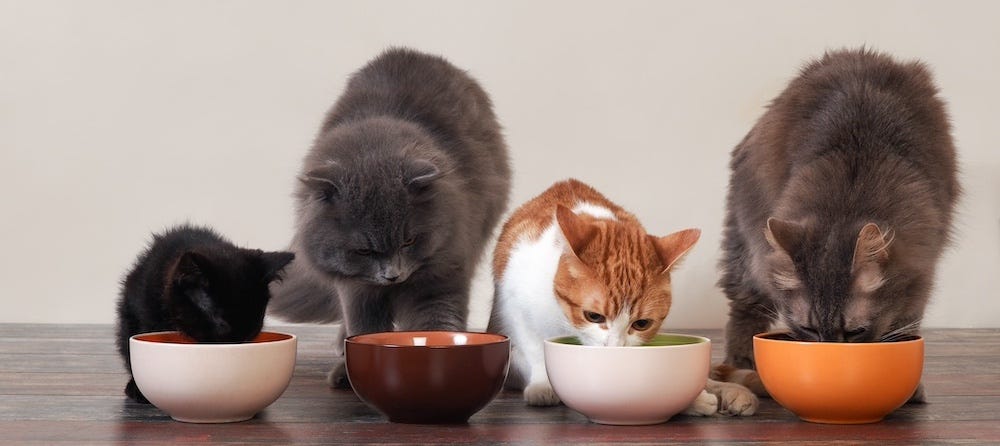Incontinence is a fairly common problem among sick and elderly cats. Unfortunately, it often results in frequent clean-ups for you, and significant discomfort for your pet. However, there are solutions—one of the best being cat diapers.
Cat incontinence
Cat incontinence can be caused by many conditions (such as obesity or bladder stones), and not just illness or old age. This makes it all the more important for you to be ready to make your cat’s well-being a priority, as it will be a process. Keep in mind that, despite the use of cat diapers, expressing your cat’s bladder is still necessary. This should be done every eight hours to avoid infection—something that diapers cannot prevent. Diapers and bladder expression should be used together to ensure your pet’s optimal comfort.

As with anything, diapers have their pros and cons. Before we get into important considerations, however, it’s necessary to review the kinds of diapers available for your cat.
Disposable
These single-use diapers are effective because they’re usually adjustable and can go straight in the trash afterwards, allowing you to forego the washing process. As with baby diapers, though, the cost can add up.
Cloth
These washable, eco-friendly diapers will be softer on your cat’s bottom, making him a little more comfortable. However, they may be a tad more difficult to adjust to your pet, and you will need to wash them regularly to prevent rashes.
Wraps
These are solely for urine and don’t cover your cat’s bottom. They’re more comfortable, as they’re less restrictive, but won’t work if your cat has a bowel problem.
Pros of cat diapers
Most of the benefits of cat diapers are obvious: They keep your cat from making a mess everywhere, saving him embarrassment and saving you work. They also allow your cat to regain his independence and urinate more frequently and comfortably, preventing him from getting infections.
Furthermore, for cats with mobility issues (particularly those with weak rear legs), diapers are a saving grace. Cats with these problems tend to scoot around on their bottoms, so diapers lend them a layer of protection that keeps them from getting rug burn.
Diapers are also great for cats that scoot around, because they keep bacteria off the floor from entering the urethra and causing a Urinary Tract Infection (UTI). A UTI is the last thing your cat needs, as it will only further his incontinence issues and increase his discomfort.
Therefore, cat diapers are not only a good choice for incontinent pets, but for immobile pets that tend to scoot around. They also help train cats with a tendency toward spraying, or “marking” their territory, to discontinue the habit.
Cons of cat diapers
Up until this point, it may seem like pet diapers are just dandy—and they are! They can sincerely change your cat’s disposition toward his condition, and improve his ability to enjoy life. But, like anything, they have their downsides.
For one, some cats are not always cooperative, making placing them in a diaper considerably difficult. For this reason, it’s important to be as calm and gentle as possible when approaching your cat to replace his diaper.
How to replace your cat’s diaper:
- Cradling your cat like a baby, slide his tail through the diaper hole first.
- Then, bring the bigger side of the diaper between his hind legs and under his stomach.
- Place the shorter side over his back and bring both sides together, securing them with the hooks/clips/tabs that might come with the diaper. Try to avoid holding your cat firmly in place or using excessive force.
- Note that cats with tails might have a harder time squeezing into diapers. For these cats (and cats with fused legs), turning the diaper sideways will ensure coverage, while still keeping it relatively comfortable.
Not all cats will find diapers comfortable. They can be irritating, and can take some getting used to. Alternate between disposable and cloth diapers to see which one your cat better adapts to, and test out various brands before settling on the right one.
Other considerations
One final thing to note is that keeping the diaper in place could be the biggest challenge of all. At first, your cat might try to wiggle, claw, and bite the diaper off. Remember that a cat is a naturally anxious creature, one that will barely tolerate having a hat on his head, much less an entire wrap around half his body.
Baby onesies
If this is the case with your cat, consider buying him a baby onesie. It sounds silly, but it will work. Place him in the onesie, and he’ll be unable to reach the diaper. The onesie will also hold the diaper in place and keep it from slipping off due to other circumstances. The onesie will get dirty, so make sure you have a backup supply.
Between onesies and diapering, you probably feel like you’re entering (or re-entering) motherhood. But despite the many considerations and potential outcomes of cat diapers, they’re still one of the best solutions for pet incontinence. They are accessible, neat, and fairly easy to get used to (for you and your kitty!). If you and your cat don’t get it right the first time, don’t fret. This is a new experience for the both of you, but it will eventually make your lives easier.
Not interested in diapers for your cat? Try a self-cleaning litter box.
Guest post by Ellie Batchiyska of Handicapped Pets, your most trusted source for pet wheelchairs, harnesses, and back braces.




